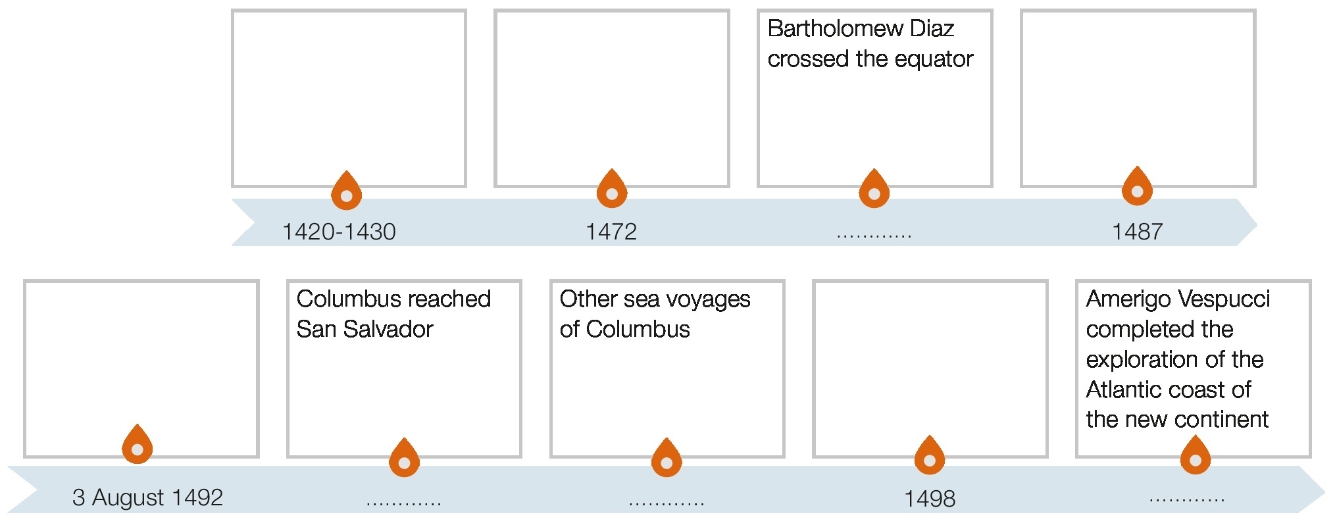The First Image of the “New World”
When Columbus came back from his first expedition he sent a letter to Luis de Santángel, the secretary of the Royal Treasury, to describe the inhabitants and the new lands that he had explored. Columbus had read reports by missionaries, travel literature and works of fiction. He had expected to meet cannibals and Amazons, and find goldfields, but in reality he met a few frightened natives who were attracted by objects of small value and were ready to accept the Christian religion. His point of view was that of a conqueror. In fact, he was sure that the natives could provide important resources such as precious goods and serve as a workforce for the Spanish monarchy.
Primary Source from The letter of Christopher Columbus to Luis de Santángel, 1493
They never refuse anything that is asked for. They even offer it themselves, and show so much love that they would give their very hearts. Whether it be anything of great or small value, with any trifle of whatever kind, they are satisfied.
They have no iron or steel, nor weapons, nor are they suited for them, because although they are well-made men of commanding stature, they appear extraordinarily timid.
They have no religion, nor idolatry, except that they all believe power and goodness to be in heaven. They firmly believed that I, with my ships and men, came from heaven, and with this idea I have been received everywhere, since they lost fear of me.
As for monsters, I have found not trace of them except at the point in the second isle as one enters the Indies, which is inhabited by a people considered in all the isles as most ferocious, who eat human flesh. They possess many canoes, with which they overrun all the isles of India, stealing and seizing all they can. They are not worse looking than the others, except that they wear their hair long like women, and use bows and arrows of the same cane, with a sharp stick at the end for want of iron, of which they have none. They are ferocious compared to these other races, who are extremely cowardly; but I only hear this from the others.
